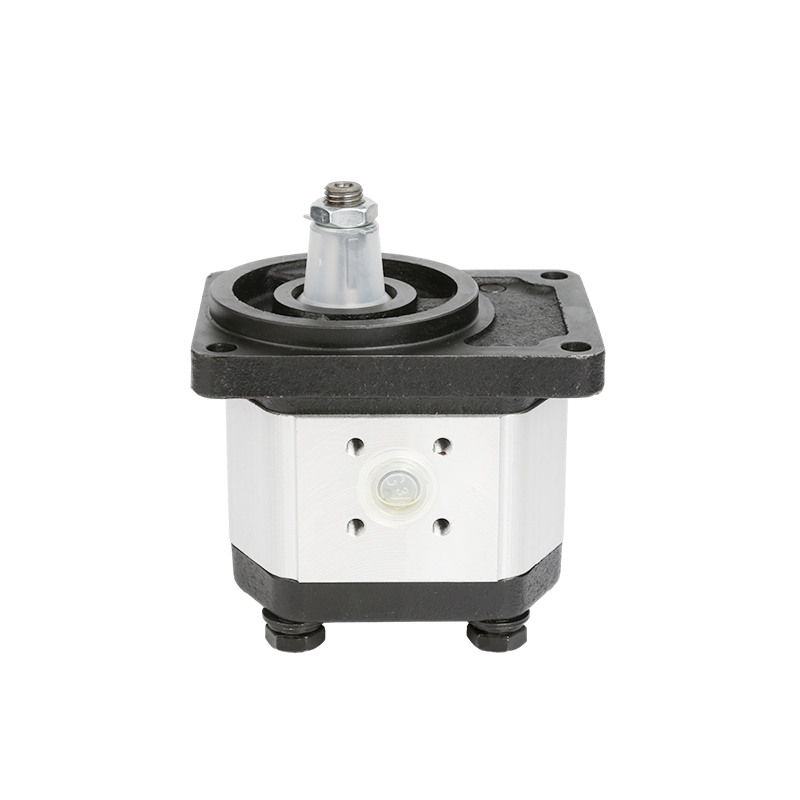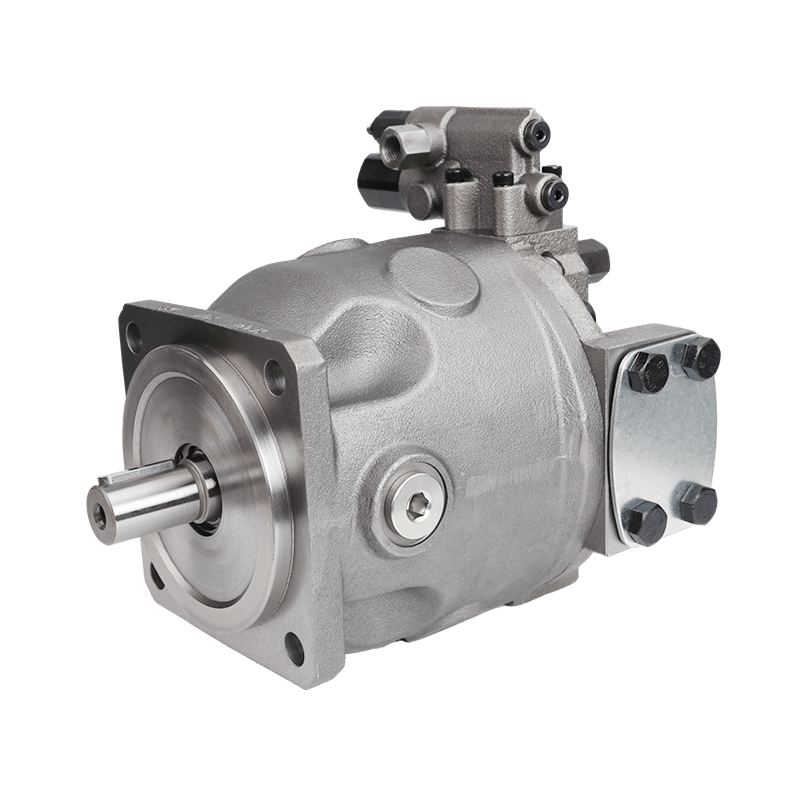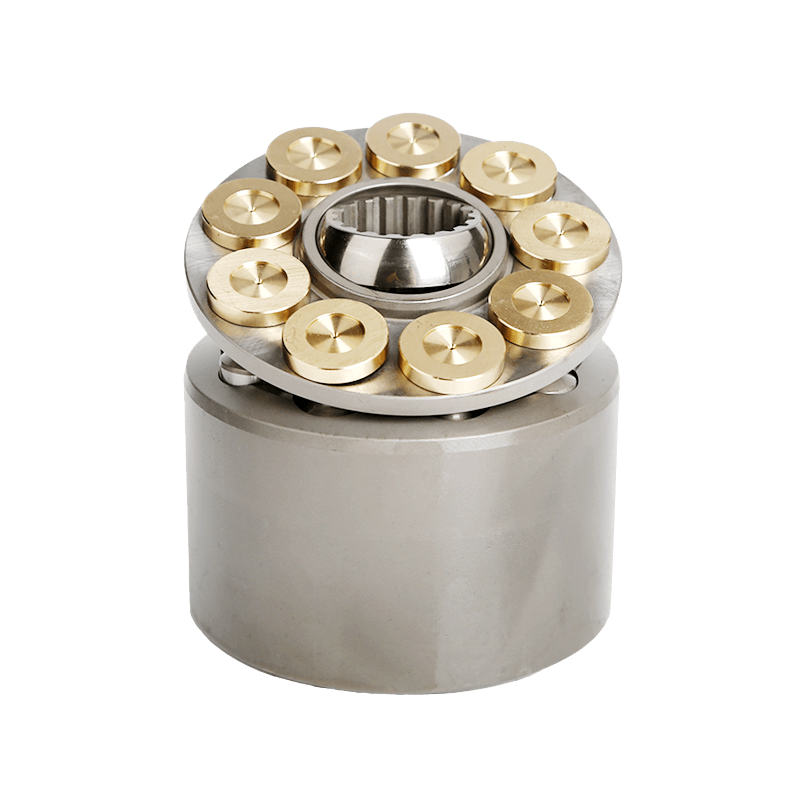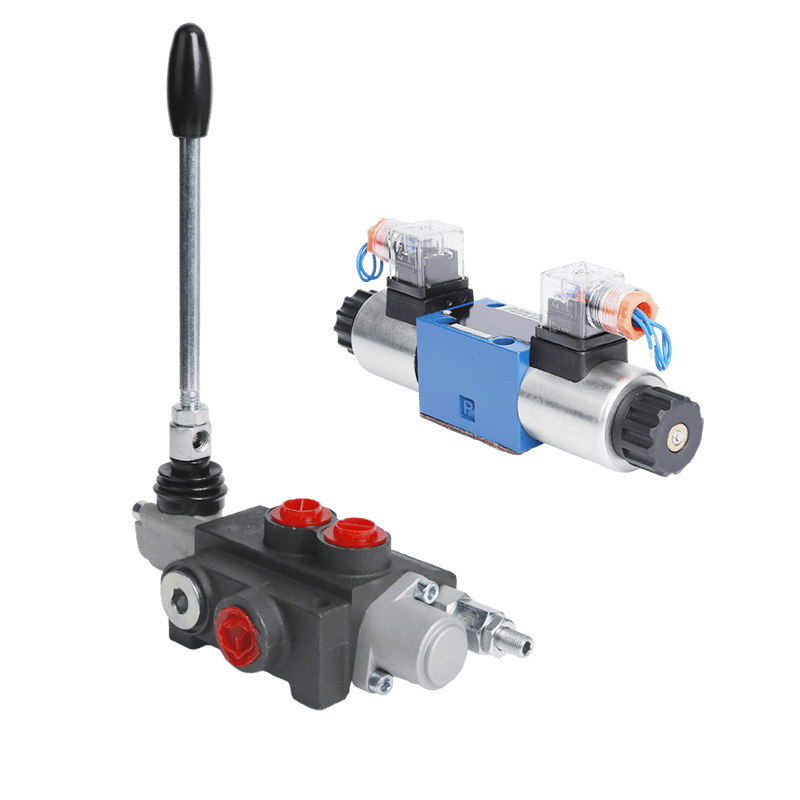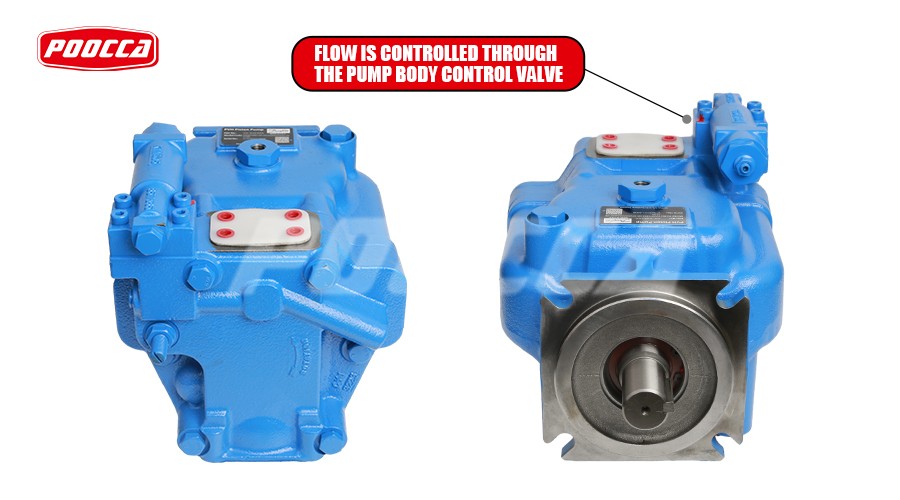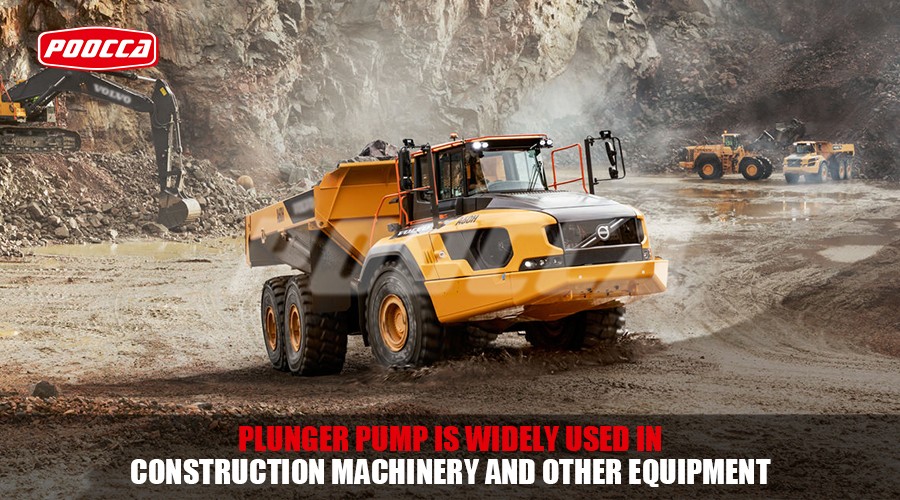Understanding Hydraulic Pumps
Hydraulic pumps play a crucial role in various industrial and mechanical systems, providing the necessary power to operate heavy machinery and equipment. Understanding the function of hydraulic pumps and recognizing signs of potential issues is essential for ensuring the smooth operation of hydraulic systems.
What is a Hydraulic Pump?
A hydraulic pump is a mechanical device designed to generate flow or pressure within a hydraulic system. It converts mechanical power into hydraulic energy, which in turn controls the movement and operation of various components such as cylinders, motors, and valves. Hydraulic pumps are integral to the functionality of numerous applications, including construction equipment, manufacturing machinery, and automotive systems.
The Role of Hydraulic Pumps in Systems
The primary function of hydraulic pumps is to transfer fluid from a reservoir to the rest of the hydraulic system. This pressurized fluid then creates the force necessary for powering different mechanisms within the system. Whether it’s lifting heavy loads or driving machinery, hydraulic pumps enable efficient and controlled movement in diverse industrial settings.
Types of Hydraulic Pumps
There are several types of hydraulic pumps, each with distinct operational characteristics. Common variations include gear pumps, piston pumps, and vane pumps. Gear pumps are known for their simplicity and reliability, while piston pumps offer high efficiency and precise control. Vane pumps, on the other hand, provide consistent performance with minimal noise levels.
Signs Your Hydraulic Pump Needs Fixing
Recognizing indications of potential problems with your hydraulic pump is crucial for preventing costly downtime and extensive damage to your equipment.
Common Symptoms of a Faulty Pump
- Unusual Noise: If you notice excessive noise during operation, it could indicate issues with internal components or fluid flow.
- Fluid Leakage: Any visible leaks or seepage around the pump assembly may signify seal or gasket failures.
- Pressure Loss: A decrease in system pressure can point towards worn-out components or internal leaks.
Diagnosing Hydraulic Pump Problems
Visual observation combined with precise measurements can reveal critical insights into potential pump failures. For instance, excessive clearance within piston and cylinder bores exceeding allowable limits can lead to decreased performance and eventual failure.
By understanding these fundamental aspects of hydraulic pumps, you can effectively identify when maintenance or repair work is necessary to ensure optimal system performance.
Fixing a Hydraulic Gear Pump
Hydraulic gear pumps are essential components in hydraulic systems, providing the necessary fluid flow and pressure for efficient operation. Identifying and addressing issues with your hydraulic gear pump is crucial to maintaining the overall performance of your hydraulic system.
Identifying Issues with Your Hydraulic Gear Pump
When it comes to hydraulic gear pumps, two common issues that often arise are leak detection and repair, as well as addressing pressure loss and noise.
Leak Detection and Repair
One of the most prevalent problems with hydraulic gear pumps is fluid leakage. This can occur due to worn-out seals, gaskets, or damaged components within the pump assembly. To identify potential leaks, perform a visual inspection of the pump for any signs of fluid seepage or accumulation. Additionally, check for oil stains or puddles beneath the pump, indicating possible leakage points. Once identified, promptly address these leaks by replacing faulty seals or gaskets and repairing any damaged components to prevent further fluid loss.
Addressing Pressure Loss and Noise
Pressure loss and unusual noise during operation are indicative of underlying issues within the hydraulic gear pump. A decrease in system pressure may result from worn-out gears, improper clearances, or internal leaks. Similarly, excessive noise can stem from damaged bearings or misaligned components within the pump assembly. Utilize precise measurements and diagnostic tools to pinpoint areas of pressure loss and inspect internal components for wear or damage. Addressing these issues promptly is essential to restore optimal pressure levels and minimize noise during operation.
Step-by-Step Guide to Repairing a Hydraulic Gear Pump
Repairing a hydraulic gear pump involves a systematic approach to disassembly, cleaning, replacing worn parts, and reassembly.
Disassembly and Cleaning
Begin by shutting off the hydraulic system and relieving any residual pressure within the pump. Carefully disassemble the pump assembly, taking note of each component’s position for accurate reassembly. Thoroughly clean all parts using an appropriate solvent to remove dirt, debris, and contaminants that may affect performance. Inspect internal surfaces for signs of wear or damage, paying close attention to gears, bearings, and housing components.
Replacing Worn Parts and Reassembly
Identify any worn-out or damaged parts during the cleaning process. Replace these components with high-quality replacements that adhere to manufacturer specifications. Ensure proper lubrication of gears and bearings before reassembling the hydraulic gear pump. Follow precise torque specifications when securing fasteners to prevent over-tightening or under-tightening critical components. Once reassembled, conduct thorough testing to verify proper functionality before reintegrating the pump into your hydraulic system.
By following this comprehensive guide to repairing a hydraulic gear pump, you can effectively address common issues while ensuring reliable performance in your hydraulic system.
Repairing a Hydraulic Piston Pump
Hydraulic piston pumps are vital components in hydraulic systems, providing the necessary fluid pressure for efficient operation. Understanding common problems associated with hydraulic piston pumps and the process of overhauling them is essential for maintaining optimal system performance.
Troubleshooting Hydraulic Piston Pump Problems
Cavitation and Overheating
Cavitation occurs when vapor bubbles form in the hydraulic fluid due to low pressure, leading to potential damage to the pump and reduced efficiency. Overheating, on the other hand, can result from prolonged operation at high pressures or inadequate cooling. Both issues can significantly impact the performance and longevity of hydraulic piston pumps, necessitating prompt attention and resolution.
Piston and Seal Replacement
Wear and tear on pistons and seals are common occurrences in hydraulic piston pumps, often leading to fluid leakage and diminished performance. Regular inspection of these components is crucial for identifying signs of deterioration, such as scoring or pitting on piston surfaces and seal degradation. Timely replacement of worn pistons and seals is imperative to prevent further damage to the pump assembly.
How to Overhaul a Hydraulic Piston Pump
Inspection and Maintenance Tips
Prior to overhauling a hydraulic piston pump, conduct a comprehensive inspection of all internal components, paying particular attention to pistons, seals, cylinders, and associated hardware. Utilize diagnostic tools to assess fluid pressure levels, temperature variations, and overall system efficiency. Additionally, adhere to manufacturer guidelines for scheduled maintenance tasks such as fluid changes, filter replacements, and lubrication procedures.
Professional vs. DIY Repairs
When considering overhauling a hydraulic piston pump, it’s essential to evaluate the complexity of the task against your expertise and available resources. While minor maintenance tasks such as seal replacements may be feasible for DIY repairs with adequate knowledge and tools, more intricate procedures involving piston recalibration or cylinder reconditioning may require professional intervention. Engaging qualified technicians ensures precision in component reassembly and adherence to industry standards for optimal pump performance.
By addressing cavitation issues, replacing worn pistons and seals, conducting thorough inspections, and making informed decisions regarding repair approaches, you can effectively overhaul a hydraulic piston pump while safeguarding its functionality within your hydraulic system.
Mending a Hydraulic Vane Pump
Hydraulic vane pumps are essential components in hydraulic systems, providing efficient fluid flow and pressure for various industrial applications. Understanding common failures associated with hydraulic vane pumps and the repair process is crucial for ensuring optimal system performance.
Hydraulic Vane Pump: Common Failures
Vane Wear and Breakage
One of the common issues encountered with hydraulic vane pumps is vane wear and breakage. Over time, continuous friction and pressure can lead to wear on the vanes, affecting the pump’s efficiency and fluid flow. Additionally, excessive stress or foreign particles within the hydraulic fluid can result in vane breakage, disrupting the smooth operation of the pump.
Solving Flow Issues
Flow irregularities such as reduced flow rates or inconsistent fluid delivery are indicative of underlying problems within hydraulic vane pumps. These issues may stem from vane wear, internal obstructions, or inadequate lubrication. Addressing flow irregularities promptly is essential to prevent further damage to the pump assembly and maintain consistent performance.
The Repair Process for Hydraulic Vane Pumps
Vane Replacement and System Flush
When addressing vane wear or breakage in a hydraulic vane pump, it’s imperative to replace worn or damaged vanes with high-quality replacements that adhere to manufacturer specifications. Thoroughly clean the pump housing and internal components to remove any debris or contaminants that may affect new vane performance. Conduct a system flush to ensure proper circulation of hydraulic fluid without any residual particles that could compromise pump functionality.
Ensuring Optimal Performance Post-Repair
After completing the repair process for a hydraulic vane pump, it’s essential to conduct comprehensive testing to verify its optimal performance within the hydraulic system. Monitor fluid flow rates, pressure levels, and overall system efficiency to ensure that the repaired pump operates seamlessly without any irregularities. Adhering to recommended maintenance schedules and monitoring performance indicators allows for early detection of potential issues, contributing to prolonged pump longevity and reliable operation.
POOCCA provides comprehensive maintenance manuals and resources that offer detailed instructions on the proper care and maintenance of their hydraulic pumps. These resources help operators and maintenance personnel understand the specific requirements of pumps and perform maintenance tasks effectively.
By addressing common failures such as vane wear and breakage, solving flow issues promptly, replacing vanes following manufacturer guidelines, conducting thorough system flushes, and ensuring optimal post-repair performance through comprehensive testing, you can effectively mend a hydraulic vane pump while maintaining its reliability within your hydraulic system.
Maintenance Tips for Hydraulic Pumps
After successfully repairing a hydraulic pump, it’s essential to implement preventative maintenance strategies to ensure long-term efficiency and reliability. By incorporating regular cleaning and inspection practices, as well as monitoring temperature and pressure levels, you can proactively address potential issues and maintain optimal performance.
Preventative Maintenance Strategies
Regular Cleaning and Inspection
Hydraulic pumps, such as those offered by POOCCA, are renowned for their durability and robustness in demanding industrial environments. To uphold their longevity and performance, regular cleaning and inspection are paramount. Implement a scheduled cleaning regimen to remove dirt, debris, and contaminants that may affect the pump’s functionality. Utilize manufacturer-recommended solvents and cleaning techniques to ensure thorough maintenance without compromising internal components.
Routine inspections should encompass visual assessments of the pump assembly, including seals, gaskets, and fluid connections. Additionally, monitor for any signs of fluid leakage or abnormal wear on critical components. By adhering to a proactive approach to cleaning and inspection, you can identify potential issues early on and prevent costly downtime.
Temperature and Pressure Monitoring
Monitoring temperature and pressure levels within the hydraulic system is crucial for preemptive maintenance. POOCCA hydraulic pumps are designed to withstand extreme conditions; however, continuous operation under high temperatures or pressures can impact their efficiency over time. Implement real-time monitoring systems or utilize diagnostic tools to track temperature variations and pressure levels during operation.
By closely monitoring these parameters, you can identify any irregularities that may indicate underlying issues with the hydraulic pump. Early detection of temperature fluctuations or pressure deviations allows for timely intervention before potential damage occurs.
When to Seek Professional Help
Recognizing Complex Issues
While routine maintenance tasks contribute significantly to the longevity of hydraulic pumps, there are instances where complex issues require professional expertise. Recognizing the complexity of certain problems such as cavitation-related damage or extensive wear on internal components is essential in determining when professional assistance is necessary.
Finding Qualified Repair Services
When faced with intricate pump malfunctions or extensive damage beyond routine maintenance scope, seeking qualified repair services becomes imperative. Engage reputable repair providers with expertise in handling POOCCA hydraulic pumps specifically. Their familiarity with POOCCA’s product specifications ensures precision in diagnostics and repairs while upholding industry standards.
By integrating preventative maintenance strategies into your operational protocols while recognizing when professional intervention is warranted based on industry insights, you can optimize the performance of your hydraulic pump while minimizing downtime.

